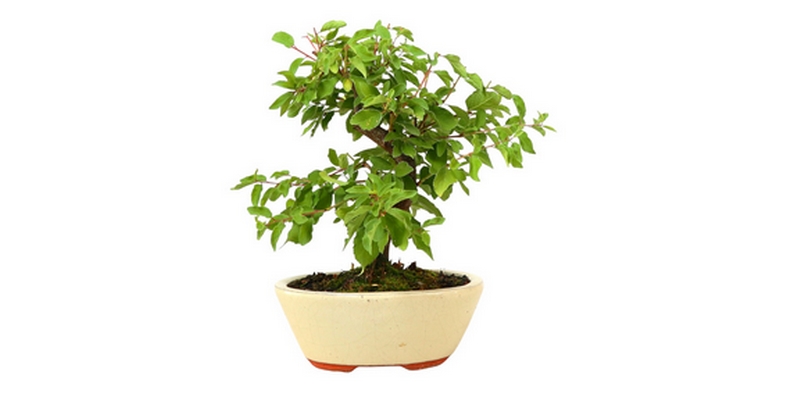
Common Name: Prunus Spinosa
Scientific name: Prunus Spinosa
Characterization: Original species of Europe and Western Asia, belonging to the Rosaceae family.
This bonsai is of caduca leaf, known for its dense dark green foliage and sharp thorns. During the spring, it produces small white flowers that turn into fruits, black-to-blue foods, known as "pumps".
It is also appreciated, as a garden plant, for its ability to form dense massive thorns, which makes it ideal for natural fencing.
Location: Outside, where take 2 to 3 hours of direct sun per day (ideal in the morning or late afternoon), protected from strong winds and frosts.
Watering: To water abundantly the earth until a lot of water goes out through the drain holes in order to moisten evenly the soil, always above never by immersion, with a fine drain waterer.
Tips on watering, see irrigation technical data sheet.
Let slightly dry the surface layer of the soil between each watering (to confirm if the plant already needs water, touch the earth with the fingers).
If you have a dish under Bonsai, never leave any water in it (to prevent the roots from rotting).
There is no advantage in spraying the leaves, just do it in the days when it adds up and if the fertilizer goes for foliar application, but ensure that they arrive dry at night to avoid fungi.
Nutrition: From February to October/November, with a base plan composed of, a complete fertilizer (Fertil Bonsai Humic, or Green & Gold Bonsai Organic or Biogold), and a biostimulant throughout the year (Bio Bonsai Activ), can still be linked with other products in our range.
Detailed information on how to combine these products the rest of our range, or for a more specific nutrition plan, see complete nutrition plan technical sheet.
Poda: We grow 5 to 6 leaves, and then we lower by the first leaves.
Tips on pruning, see the technical sheet pruning and defoliation.
Transplant: With Terra Bonsai Folhosas in January/February, before sprouting.
Details about transplantation, post transplantation and specific fortifiers that you can use refer to repotting technical sheet.
Scratch: It can be crowded all year, but it's a little bit brittle- It is usually chosen to crush at the end of the winter or in summer together with partial/total formation and/or defoliation pruning.
Indications on padding, see wiring technical sheet.








